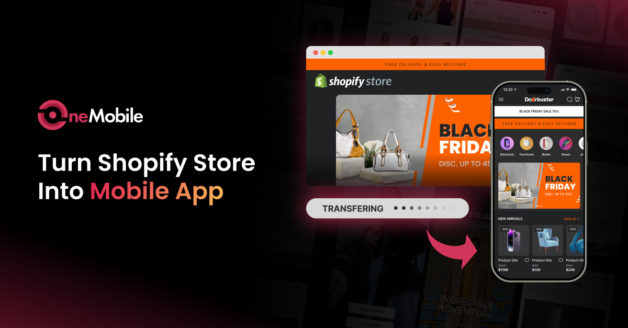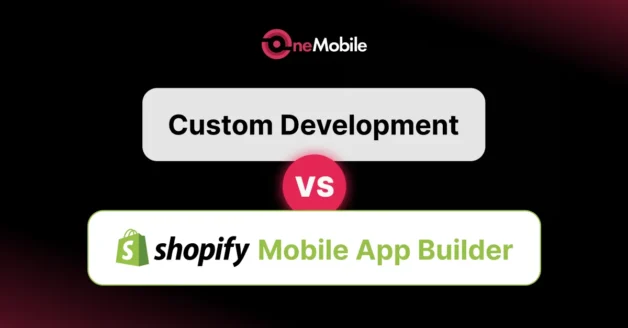June 9, 2025
Top 10 Mobile App Benefits & Key Considerations

Benefits of owning a Shopify mobile app
| Considerations of a Shopify mobile app
|
Running a Shopify store today means navigating challenges like standing out in a crowded market, keeping customers engaged, and ensuring every part of the shopping experience, especially on mobile is smooth and efficient. While a mobile-optimized website is helpful, it often falls short when it comes to driving repeat visits or boosting conversions long-term. That’s where a dedicated mobile app comes in.
A Shopify mobile app offers a faster, more personalized shopping experience, along with greater control over how you connect with your audience. With features like quick checkout, push notifications, loyalty programs, and more, it becomes a powerful tool for increasing both engagement and retention. Beyond just convenience, it reduces cart abandonment and encourages repeat purchases by making shopping easier and more tailored to the customer.
In this post, we’ll break down the top key mobile app benefits for Shopify , and how it can help grow your business by improving both customer experience and sales.
Why does every Shopify store need a mobile app now?
Mobile commerce is growing fast, leading more than half of all online shopping now done on smartphones. For Shopify store owners, this shift means your customers expect a fast, seamless shopping experience on mobile. If you’re not meeting that expectation, you’re likely losing sales.
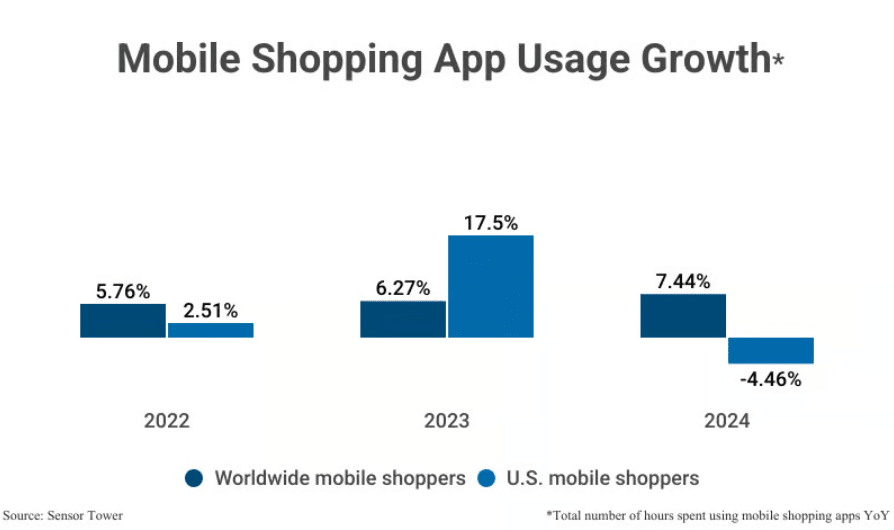
Mobile app usage for shopping continues to rise as consumers increasingly prioritize convenience, speed, and personalization. This trend reflects a broader shift in shopping behavior, with brands investing more in mobile-first experiences to meet evolving customer expectations.
10 benefits of owning a mobile app for your Shopify stores
1. Apps load quicker and feel better to use
Mobile apps are designed for speed and seamless performance. Unlike websites that rely on web browsers and variable connection speeds, apps store key data locally on the device, reducing load times dramatically. This means your customers can start browsing in seconds instead of waiting for pages to load.
In addition, Shopify mobile app offers a smooth, responsive interface tailored to touch gestures and small screens throughout these features, such as:
- Swipe Navigation: This allows users to move between screens or browse through product carousels simply by swiping left or right, just like they would on social media. It’s a natural gesture on mobile devices and reduces the need for extra taps or loading new pages, making browsing faster and more fluid.
- Tap-to-Expand Elements: Features like product descriptions, size guides, or image galleries can be collapsed by default and expanded with a single tap. This helps keep the interface clean and uncluttered, while still giving users access to more details when they need them without overwhelming the screen.
- Large Clickable Buttons: Buttons like “Add to Cart,” “Buy Now,” or “Filter” are designed to be easily tapped with a thumb, reducing the chances of user frustration from misclicks. They improve accessibility and ensure the shopping experience feels smooth and effortless, even on smaller devices.
These design elements make it easier for users to browse and interact with your store using just one hand, which is especially valuable for on-the-go shoppers.
2. Fast checkouts help shoppers finish purchases more conveniently
A long and complicated checkout process is a major reason why customers abandon their shopping carts. Studies indicate that 18% to 22% of shoppers leave their carts due to lengthy or complex checkout procedures.
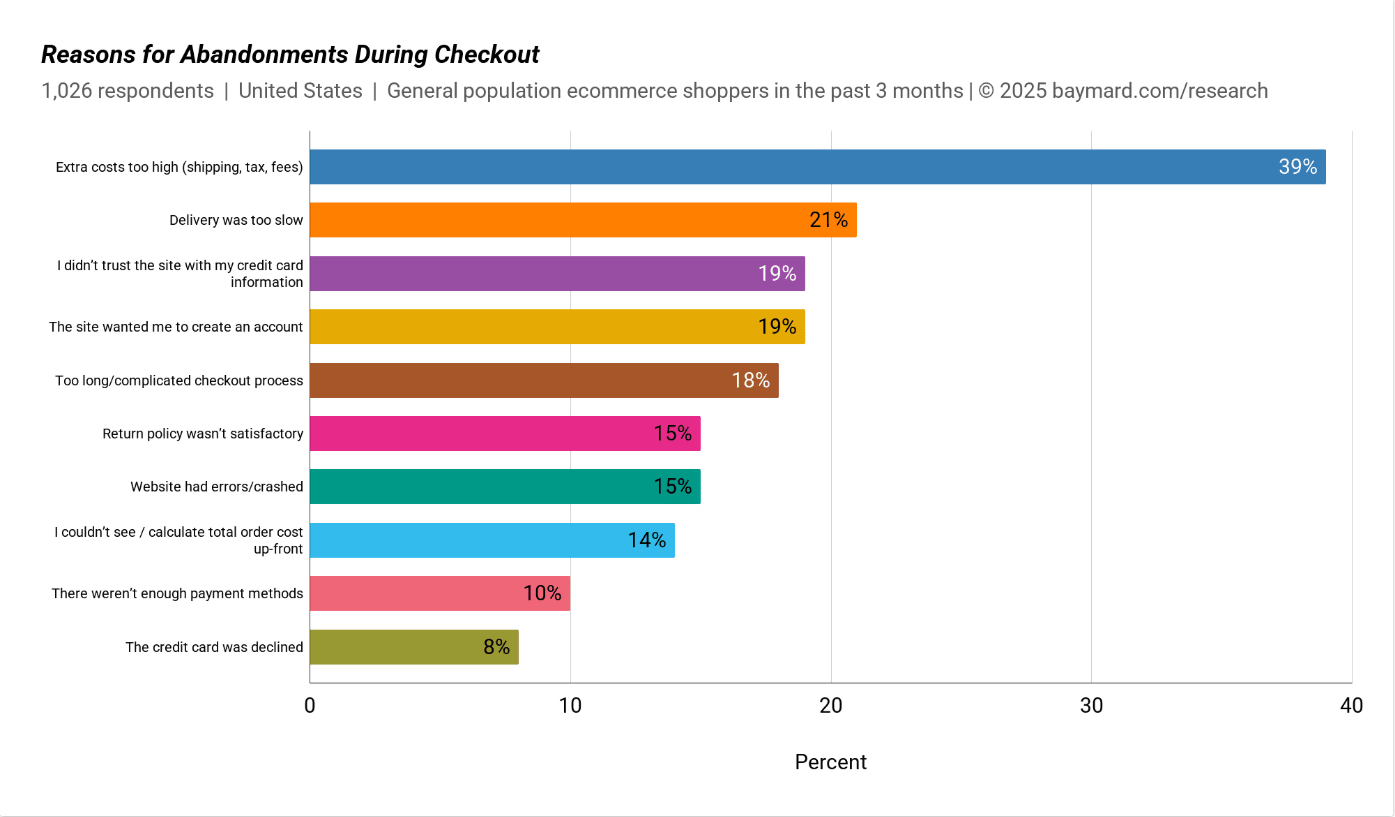
Mobile apps can also help reduce this with features like one-tap checkout, saved credit card info, and digital wallets like Apple Pay and Google Pay. Mobile apps are built to help improve customers’ experiences.
Especially in the age of instant gratification, customers will be more satisfied if they can navigate to another product with just one tap, thereby easily converting into actual purchases.
Now, explore how mobile apps help turn more visitors into paying customers and drive repeat purchases, particularly.
3. App users buy more and more often than website visitors
Every element in the Mobile app is designed to keep the shopper engaged from smooth product discovery to simplified checkouts. Additionally, app users are more receptive to marketing because they’ve already shown commitment by downloading your app. This makes it easier to reach them with promotions, reminders, or new product launches.
You can set up these alerts based on user behavior, ensuring the right customer gets the right offer at the right time.
4. In-app tools make buying faster and more delightful
What elevates the mobile app experience even further is the range of smart tools designed to make shopping more intuitive, engaging, and even fun. Rather than acting as static catalogs, modern apps enable dynamic features that guide and assist the shopper throughout their journey.
Mobile apps turn the shopping journey into an experience, not just a transaction, offering features that improve the shopping experience, such as:
- Wishlists: Let users save favorite items to revisit later, encouraging return visits and helping boost future conversions.
- Interactive video shopping (shoppertainment): Combines product videos with live or shoppable content, letting users watch demos and buy directly which is great for engaging experiences.
- Voice and image search: Enables users to search by speaking or uploading a photo, making product discovery faster and more intuitive.
- Product alerts and reminders: Sends notifications when items go on sale, come back in stock, or are running low helping recover lost sales and drive urgency.
To make these features even more effective, mobile apps allow you to stay directly connected with your audience through personalized messages.
Let’s take a closer look at how push notifications (product alerts and reminders) strengthen customer engagement and connection.
5. Stay connected with customers using push notifications
Push notifications are a powerful way to reach customers in real time directly on their phone screens. Unlike emails, they’re harder to miss and can achieve open rates as high as 90%, compared to just 20% for email.
With tools like OneMobile, Shopify store owners can take this even further by sending personalized push notifications based on each customer’s unique shopping behavior, such as:
- Abandoned cart: Remind users to complete their purchase with a gentle nudge or limited-time discount.
- Wishlist reminder: Prompt users when items on their wishlist are back in stock or on sale.
- Welcome offer: Greet new users with a special discount or offer to encourage their first purchase.
- Inactive user: Re-engage customers who haven’t visited in a while with fresh promotions or featured products.

6. Rewards and referrals keep users engaged
According to a report by SquadApp, 60% of users are more inclined to engage with apps that offer loyalty rewards or achievements, and referral programs can boost user acquisition by 35%.
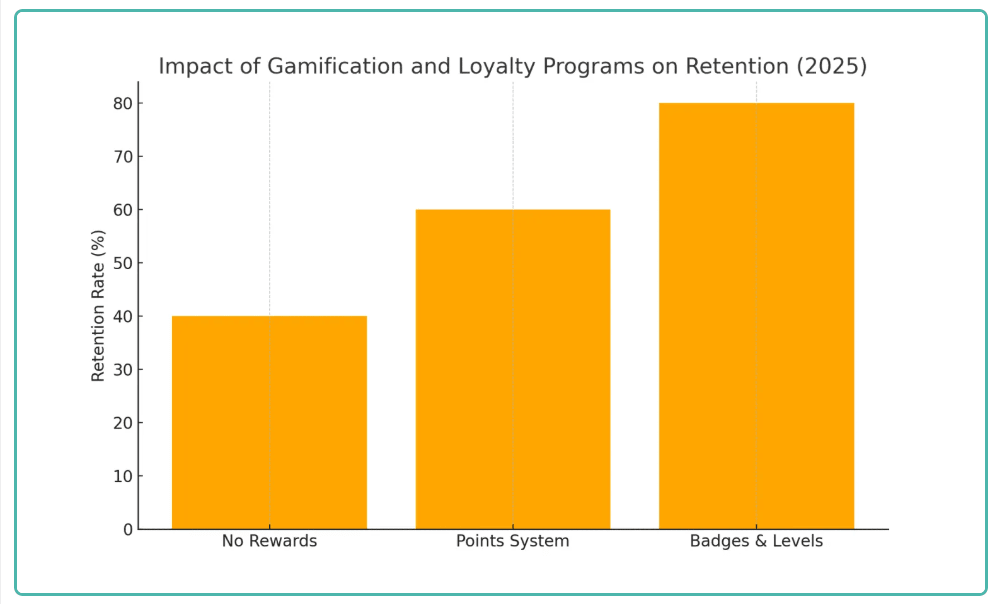
Besides, take a look at what really boosts long-term engagement, though, are features that reward loyalty. Mobile apps make it easy to run personalized rewards programs offering points for purchases, exclusive discounts, or special gifts for returning customers. These rewards encourage users to come back more often and spend more each time.
Referral features are also more effective in apps. With just a few taps, users can share your store with friends via text or social media and get rewarded for every successful referral. This not only drives new traffic but builds a community around your brand.
7. Let shoppers browse even when offline
Even when users are offline, your app can still keep them engaged. Apps can store content like product catalogs or previous browsing history, allowing shoppers to explore and plan purchases without an internet connection. Once they’re back online, they can pick up where they left off seamlessly completing transactions without frustration.
8. Strengthen your brand credibility through an App Store presence
- Build trust through visibility: Having your app listed on the Apple App Store and Google Play Store shows that your brand is legitimate and professional. These platforms have strict review processes, so approval alone signals credibility.
- Establish brand authority: A mobile app signals to customers that your store is serious about offering a better and more convenient shopping experience.
- Leverage social proof: Positive reviews and high ratings help build trust with potential customers and improve your app’s reputation.
- Increase chances of being featured:
Highly rated apps are more likely to be recommended or featured by the app stores, driving additional exposure and downloads.
Also, positive reviews and high ratings further boost your app’s chances of being recommended or featured driving even more installs and building trust through social proof.
9. New customers can discover you through search
Being searchable in the app ecosystem can act like SEO for mobile. With the right app name, keywords, and description, you can increase your visibility and attract new users organically. Positive reviews and high ratings further boost your app’s chances of being recommended or featured driving even more installs and building trust through social proof.
10. Shopify is built to support mobile growth
Also, Shopify offers a strong foundation for mobile-first growth. From built-in mobile tools to omnichannel support, Shopify makes it easy for you to build, manage, and grow your mobile presence.
You can quickly and conveniently build a mobile shopping app using OneMobile, thanks to its intuitive theme system and drag-and-drop builder. The platform offers a variety of customizable layouts and appearance settings, allowing you to create a branded, professional-looking app without any coding.
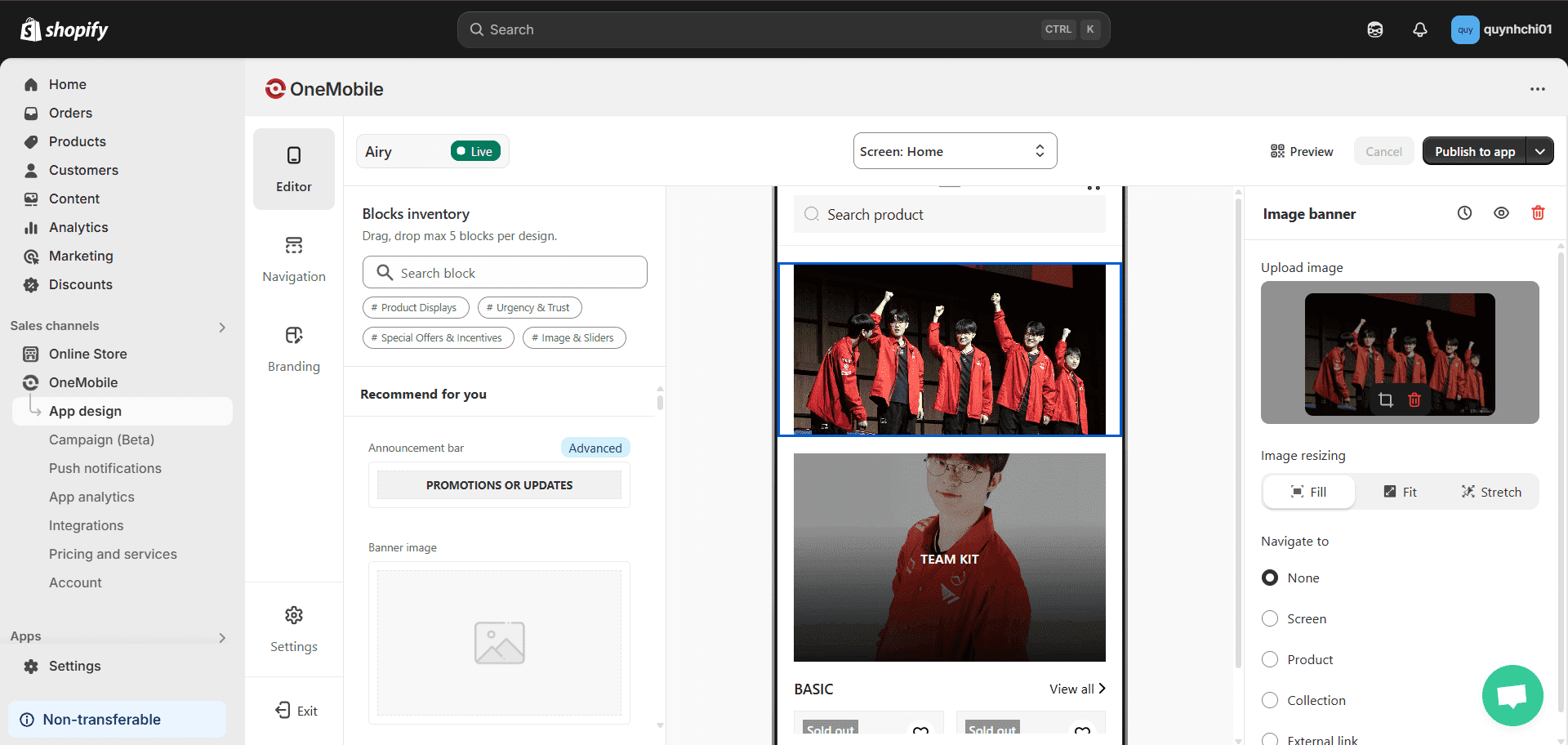
Let’s now look at how mobile apps deliver a smoother and more satisfying shopping experience for your customers.
What to know before building your app
Before jumping into development, it’s important to choose the right type of app for your store. Native, hybrid, or web app comes with its own set of advantages and trade-offs.Additionally, securing approval from both Apple and Google is a crucial step in launching your app.
Native, hybrid, or web app – What’s best?
| Type | What is it? | Pros | Cons |
| Native | Built specifically for iOS or Android using platform tools. Downloaded via app stores. | Best performance, smooth UX, full access to device features. | Costly to build and maintain separately for each platform. |
| Hybrid | Uses web code (HTML, CSS, JS) inside a native wrapper. One codebase for all platforms. | Faster, cheaper, works on both platforms, partial access to device features. | Slightly slower, less native feel on some devices. |
| Web app | Mobile-optimized website accessed via browser, not app stores. | Cheapest, works on any device, no app store approval needed.
| No push notifications, limited device access, less engaging. |
Each type has its advantages, but if you want a smooth, high-quality shopping experience that keeps customers coming back, a native app is the best winner.
OneMobile makes it easy for Shopify merchants to build high-performance native apps that are fast, affordable, and without a full dev team. It syncs your store automatically, handles app store submissions, and supports features like push notifications, loyalty programs, and offline browsing so you can offer a top-tier mobile experience with less effort.
How to get your app approved by Apple App Store and Google Play Store?
To ensure your app passes review smoothly and gets approved without delays, it’s crucial to follow platform guidelines and design with clarity, compliance, and user trust in mind.
- Follow platform guidelines closely: Apple and Google have strict rules. Not meeting them can lead to rejection.
- Ensure a clear and simple user experience: Confusing layouts, broken links, or vague navigation are common reasons for rejection.
- Include a privacy policy and disclose in-app purchases or permissions: Transparency is key to building trust and passing reviews.
These steps help your app get approved faster and create a better experience for users
Shopify mobile app disadvantages you might need to be aware of
Launching a mobile app offers powerful opportunities for growth, but it also comes with challenges that you must plan for.
1. Development and maintenance costs
Developing a native app demands significant upfront investment, followed by continuous maintenance for updates and OS compatibility. Platforms such as OneMobile help reduce these costs with ready-made, Shopify-optimized templates.
2. App store submission and approval delays
Before launch, apps must pass Apple and Google’s review processes, often a time-consuming step prone to delays or rejections due to bugs or missing policies. Therefore, you need to prepare thoroughly to help streamline this approval stage.
3. Low adoption without marketing support
Launching an app isn’t enough, you have to market it actively. You can promote it through email campaigns, website banners, social media, and incentives like discounts. Without visibility, even your most loyal customers might never know your app exists.
4. Feature limitations compared to full desktop web
Additionally, it’s crucial to promote your app through email campaigns, website banners, social media, and incentives like discounts. Without visibility, even your most loyal customers might never know your app exists.
5. Resource drain for smaller stores
Running an app adds pressure through development, testing, support, and regular updates. For smaller stores, this can quickly become overwhelming. Tools like OneMobile are designed to automate much of the process, making app management more accessible.
Final thoughts
The Shopify mobile app benefits store owners by increasing conversions, improving customer engagement, and strengthening your brand presence. In a mobile-first world, having your own app is no longer optional, it’s a competitive edge.
Of course, like any business tool, apps come with their own set of challenges.
Frequently asked questions
How can a mobile app enhance customer experience?
A mobile app offers a faster, more personalized, and seamless shopping journey. With features like one-tap checkout, real-time product alerts, and intuitive navigation, it helps users find what they need quickly while staying connected through push notifications and loyalty programs.
What are some key features of Shopify apps that improve engagement?
- Wishlists
- Product recommendations
- Loyalty rewards
- In-app exclusive deals
- Personalized push notifications
- Interactive video shopping (shoppertainment)
- Real-time inventory updates.
How can I convert my store website into a Shopify app?
You can easily turn your Shopify store into a mobile app using app builders like OneMobile. These platforms offer pre-built templates optimized for Shopify, allowing you to sync products, collections, and features without coding that help make the transition smooth and cost-effective.
Table of Contents
Table of Contents
Read more articles
How To Turn Your Shopify Store Into a Mobile App: A 2025 Guide
By Thuan Do
December 25, 2025
Shopify Mobile App Builder vs Custom Development: Which Better Suits You?
By Alexandre Le
June 26, 2025
